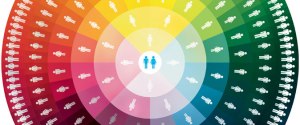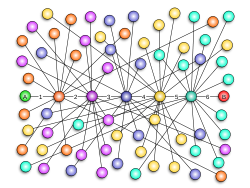Well… This is exciting, any two strangers on our planet are connected with just 6 links. It’s a small world. Yeah, we are all connected to each other. Even some great Scientists, Genius Entrepreneurs, Noble Laureates, Politicians, Celebrities etc… Are connected and can be reached within 6 links. This theory was first proposed in 1929 by the Hungarian writer Frigyes Karinthy in a short story called “Chains.”

In the 1950’s, Ithiel de Sola Pool (MIT) and Manfred Kochen (IBM) set out to prove the theory mathematically. Although they were able to phrase the question (given a set N of people, what is the probability that each member of N is connected to another member via k_1, k_2, k_3…k_n links?), after twenty years they were still unable to solve the problem to their own satisfaction. In 1967, American sociologist Stanley Milgram devised a new way to test the theory, which he called “the small-world problem.” He randomly selected people in the mid-West to send packages to a stranger located in Massachusetts. The senders knew the recipient’s name, occupation, and general location. They were instructed to send the package to a person they knew on a first-name basis who they thought was most likely, out of all their friends, to know the target personally. That person would do the same, and so on, until the package was personally delivered to its target recipient.
Although it was expected that, it would take at least hundred intermediaries but it only took between five and seven intermediaries to get each package delivered. Milgram’s findings were published in Psychology Today and inspired the phrase “six degrees of separation.”
In 2001, Duncan Watts, a professor at Columbia University, conducted an experiment on the internet through e-mail. Watts used an e-mail message as the “package” that needed to be delivered, and surprisingly, after reviewing the data collected by 48,000 senders and 19 targets (in 157 countries), Watts found that the average number of intermediaries was indeed, six.
We humans are kind of pebbles connected to each other randomly. Which means if we try to lift one pebble, all the pebble are moved. The fast growing technology made this even easier.

The first ever social networking site was “Six degrees of separation”. And now we have many social networking sites and we are connecting even faster. Some scientists predict that the 6 degree is reduced to 4 degree due to the fast building connections through plenty of social networking sites.







